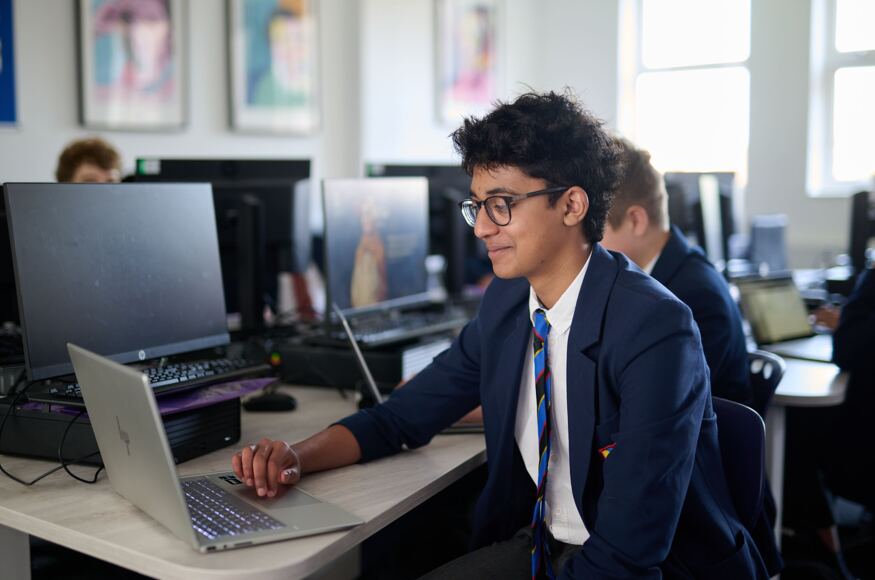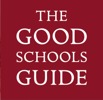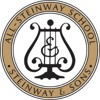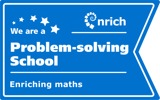
The Power of Pupils Creating Video Media in the Classroom

Introduction
Most secondary school pupils are described as ‘Gen Z’, sometimes also known as ‘Zoomers’. They were born between 1997 and 2012, and their identity has been shaped by the digital age, climate anxiety, and COVID-19. They have never known a life without technology (Whitehead, 2024). Now they are having to get to grips with AI and the impact this will have on future jobs.
Galer (2023) polled over 1,200 16–25-year-olds in the UK and found that 13% already consider themselves to be content creators and 37% would like to become content creators in the future. As Galer probes deeper into this, she suggests that many teenagers want to entertain, advocate, and inform others, and argues that we should do more to support this younger generation. We are now seeing the arrival of Generation Alpha into secondary schools. TikTok is having a huge impact on the social lives of this generation, who rely on short and sharp video content despite guidelines the app being restricted to ages 13+ (Whitehead, 2024).
This is where video media in a lesson can come into play. The Nobel Prize-winning Richard Feynman famously said the well-known phrase:
‘If you can teach something clearly, then you really understand it’.
Digital tools and devices are now optimised with video features, and allowing pupils to explore these can greatly improve their creativity, collaboration, and communication skills. Using Adobe Express, Orlagh and I have explored the power of video media in our lessons to engage and challenge our learners in new ways.
Case Study #1: Science
Situation
After the Second Form end-of-year exams, our scheme of work provides a three-week window to complete a research project. Despite a very hands-on and practical-based curriculum, pupils still struggle to plan a scientific investigation. This is something we even observe in Sixth Form, yet throughout KS3-5, we provide little opportunity for our pupils to fail at practical work, with experiments and instructions typically coming ready-baked and guaranteed to work in a 50-minute lesson.
Task
To tackle this and develop a deeper understanding of scientific investigation, I created a generic marking rubric that could be applied to almost any experiment (Fig. 2). To challenge the Second Form pupils, I gave them a GCSE chemistry practical which would introduce new ideas and concepts not covered at KS3. I also wanted to use a variety of digital platforms to support the three different domains of scientific understanding, based on Johnstone’s triangle: The Macroscopic domain, Microscopic domain and Symbolic domain (Fig. 1) (Reid, 2021). Pupils typically struggle with the latter, as these two domains can be difficult to visualise and require some imagination. This is where I thought Adobe Express and Minecraft Education could be combined to transform their understanding of a scientific investigation.
Figure 1: The Three Domains of Johnstone's Triangle
Figure 2: Marking rubric/scaffold used for designing a video lab report
Reflection
The opportunity to repeat a practical multiple times, yet change a different variable, significantly improved the class's practical skills. Pupils were more relaxed and familiar with the equipment involved in the second lesson and asked much deeper questions compared to ‘where can I find...’ and ‘how much acid do I add…?' Furthermore, outlining the two-week plan and stating that we would watch all the videos at the end improved their collaboration skills, both during the practical and in the subsequent computer room lessons. Adobe Express seamlessly allows pupil to invite their partner into a video project and edit the video together. Also, knowing their videos are freely available in the Adobe Classroom gallery means their work is no longer between them and the teacher. Pupils watch and view each other's work, offering both supportive inspiration and raising the bar.
Ultimately, they worked harder knowing it would be shown to their peers. They crafted a much better storytelling overview of the experiment, creating a YouTube-style explainer video. Interestingly, every single group used Minecraft Education in a different way to model and explain an aspect of their investigation. Some even used element blocks to show chemical equations (symbolic domain). This involved balancing them, which is something not taught until KS4. These videos were so impactful that they attracted the attention of the Association for Science Education and led to a publication in their journal School Science Review (Scott, 2025).
Further Actions
-
Inspired by the success of these digital lab reports last year, I tried another video task with my Second Form this year, ahead of their end-of-year exams. In pairs, they were assigned one of three revision video tasks: Biology, Chemistry or Physics. Pupils were encouraged to watch one another's videos for revision and were very engaged with the questioning when we watched them in class. See Table 1 below.
-
This term, I have repeated the digital video lab report task but changed the practical to a different experiment (and scientific discipline), yet kept the rubric the same.
-
Ultimately, video lab reports are something I would like to see embedded into KS4/KS5 teaching of the core assessed practicals; however, finding time in our existing curriculum is difficult. I feel the process has benefited the pupils’ learning experience of scientific investigation skills. If rolled out further up the school, pupils would continue to be much more familiar with Adobe Express and the guiding principles of my rubric, which would ultimately improve their efficiency and reduce required lesson time.
Case Study #2: English
Situation
Whilst discussing my various schemes of work with Ben, I mentioned a problem that can sometimes occur in English that I like to call ‘annotation fatigue’. The particular dislike that school pupils have for poetry has been well documented (Harris, 2018; Lerner, 2016; Regis, 2013), with a variety of reasons proffered: poetry is too opaque, it is mostly written in verse and is too challenging, too many literary devices are used – or, simply, ‘it’s not that deep’.
In the Third Form scheme of work, we were valiantly marching our way through some poetry, with the lessons all structured in a broadly similar way: introduce the poem, read the poem, discuss and annotate the poem. I tried to incorporate debate and contextual tasks whenever applicable, but we had a lot of poems to get through ahead of the end-of-year exam. As much as I wanted to help the students enjoy poetry more, I did not know how to manage it within the short time frame.
It was at this point that Ben suggested that I try out Adobe Express with my Third Form pupils as a way of helping them to engage with the poems we were studying. Once the end-of-year exam was done and dusted, Ben and I decided to experiment and spend three lessons on a task that would fuse digital learning with poetry.
Task
I arranged my Third Form class into pairs, giving each pair a poem selected from a group of four. The students were largely unfamiliar with the poems I had chosen, except for ‘The Owl and the Pussycat’. The task was for the students to create a video in which they would teach the poem to the viewer. They would give a general overview of the poem, then break it down into stanzas and talk us through them, before performing a full reading of the poem at the end. Ben and I created an example video on one of Shakespeare’s sonnets, which we showed to the class to model what we expected of them.
We team-taught the first two lessons, guiding students through the basics of Adobe; however, as it is a fairly intuitive piece of software, the students mastered the basics quickly. They could have fun with their projects: for those working on ‘The Owl and the Pussycat’, for example, they were able to have an animated owl and cat read the poem (Fig. 3). The students spend a third lesson and some homework time completing their videos, before having them shown to the rest of the class in subsequent lessons.
Reflection
Figure 3: An example of a 'slide' from a pupil video
I have spent the past few weeks showing one or two of the videos from this task at the end of my Third Form lessons. The students have been excited to watch them and have been engaged with the videos’ content.
Reflecting on the task, I would say that it has been highly effective for multiple reasons:
-
Firstly, the students have been able to engage with a genre of literature that they generally find challenging in a fresh, visually exciting way that has engaged them. Cynically, it has been a way of getting students to analyse a piece of literature by stealth: they enjoyed the process of creating the video and explaining the poem so much that some of their prior difficulties regarding understanding poetry appeared to disappear.
-
Secondly, using Adobe was an excellent way to incorporate dual coding in the classroom. By having the visual and the verbal transmitted to them simultaneously, all learners appeared to understand the poems more easily. I would highly recommend its use for those with learning needs such as dyslexia.
-
Thirdly, this task enabled students to take ownership of their work and consider their audience. This task required students to study a poem to the degree that they would be able to teach others.
-
Finally, from an English perspective, this task was a form of transactional writing – the students created a speech for their peers with a visual accompaniment. In terms of sequencing across year groups and schemes of work, this task was a way of embedding a transactional writing task into the curriculum before approaching transactional writing in IGCSE English Language papers.
Further Actions
I will now use Adobe for revision tasks with next year’s Fifth Form pupils, and with my next Sixth Form class. Banks of revision resources will be able to be created, with students working on different texts and teaching one another (an effective revision technique).
Templates and pupil examples
I urge you to spend at least five minutes following some of the links in the table below to see how a simple template can lead to brilliant pieces of work from our pupils.
Table 1: Hyperlinks to video work
| Video work | Template | Pupil examples |
|
|
|
|
|
|
|
|
|
References
- Harris, C. (2018). When, exactly, do students start thinking they hate poetry? Literary Hub. https://lithub.com/when-exactly-do-children-start-thinking-they-hate-poetry/https://lithub.com/when-exactly-do-children-start-thinking-they-hate-poetry/ (Accessed: 24 June 2025).
- Lerner, B. (2016) The Hatred of Poetry.
- Regis, A. (2013). Why do students fear poetry and how can they access it better? Guardian. Available at: https://www.theguardian.com/higher-education-network/blog/2013/mar/21/world-poetry-day-student-occupy (Accessed: 24 June 2025).
- Reid, N. (2021) The Johnstone Triangle: The Key to Understanding Chemistry. Ch. 3, pp. 48–71. Royal Society of Chemistry.
- Scott, B. (2025) Digital lab report videos: using digital platforms to enhance the storytelling and understanding of practical work, School Science Review, 393, pp. 27.
- Smith Galer, S. (2023). Half of young Brits want to be content creators. We should be helping them. Prospect Magazine. Available at: https://www.prospectmagazine.co.uk (Accessed: 23 June 2025).
- Whitehead, J. (2024). Which generation am I? Age ranges for millennials, Gen Z and more. iNews. Available at: https://inews.co.uk (Accessed: 23 June 2025).










